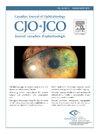综合眼科医生的前葡萄膜炎。
IF 2.8
4区 医学
Q1 OPHTHALMOLOGY
Canadian journal of ophthalmology. Journal canadien d'ophtalmologie
Pub Date : 2024-08-08
DOI:10.1016/j.jcjo.2024.07.013
引用次数: 0
摘要
前葡萄膜炎的病因和临床表现多种多样,给诊断带来了挑战。这篇叙述性综述旨在帮助普通眼科医生全面了解前葡萄膜炎的流行病学、诊断和治疗。特别强调的是,在前葡萄膜炎的检查和治疗中,要制定有针对性的循序渐进策略,而不是千篇一律的方法。对于严重、双侧、复发性或慢性前葡萄膜炎病例,胸部放射线检查和梅毒、人类白细胞抗原 B27 和血管紧张素转换酶血清学检测是适当的常规检查。其他检查应以临床结果和地区流行病学为指导,尤其是在考虑昂贵的侵入性检查时。在缺乏临床和流行病学指导的情况下进行的检查作用有限,而且会给患者和医疗系统带来巨大的成本。大多数解剖学上孤立的前葡萄膜炎病例通过局部皮质类固醇治疗即可痊愈,但有些患者需要升级到全身免疫调节疗法(IMT)。如果患者对皮质类固醇反应不佳、出现与皮质类固醇相关的副作用从而限制了皮质类固醇的使用、需要大剂量皮质类固醇来维持疾病缓解,或者合并全身性炎症疾病,则应考虑使用免疫调节疗法。综合眼科专家应与风湿免疫科专家共同管理需要接受常规改变病情抗风湿药/抗代谢药(即甲氨蝶呤、硫唑嘌呤和霉酚酸酯)治疗的患者,并提供眼科用药指导。如果在接受最大耐受量的抗代谢药物治疗后仍无法实现葡萄膜炎静止,则应将患者转诊至葡萄膜炎专科医生进行会诊,并考虑升级 IMT。葡萄膜炎转诊的时机可能取决于医疗保健辖区的当地特定因素。本文章由计算机程序翻译,如有差异,请以英文原文为准。
Anterior uveitis for the comprehensive ophthalmologist
Anterior uveitis presents a diagnostic challenge due to its wide array of etiologies and clinical manifestations. This narrative review aims to equip general ophthalmologists with a comprehensive understanding of anterior uveitis epidemiology, diagnosis, and treatment. Particular emphasis is placed on developing a tailored and stepwise strategy, rather than a one-size-fits-all approach, for the workup and treatment of anterior uveitis. Chest radiography and serologic testing for syphilis, human leukocyte antigen B27, and angiotensin-converting enzyme are appropriate routine investigations in cases of severe, bilateral, recurrent, or chronic anterior uveitis. Additional testing should be guided by clinical findings and regional epidemiology, especially when considering expensive and invasive modalities. Investigations that are obtained in the absence of clinical and epidemiologic orientation are of limited utility and incur significant costs to patients and health care systems. Most cases of anatomically isolated anterior uveitis resolve with topical corticosteroids, but some patients require escalation to systemic immunomodulatory therapy (IMT). IMT should be considered in patients who respond poorly to corticosteroids, develop side effects related to corticosteroids that limit their use, require high doses to maintain disease remission, or have concomitant systemic inflammatory disease. Comprehensive ophthalmologists should feel comfortable comanaging patients that require conventional disease-modifying antirheumatic drugs/antimetabolite therapy (i.e., methotrexate, azathioprine, and mycophenolate mofetil) with rheumatologists and providing guidance on ocular dosing. When uveitis quiescence cannot be achieved despite maximally tolerated antimetabolite therapy, patients should be referred to a uveitis specialist for consultation and consideration of IMT escalation. The timing of uveitis referral may depend on local factors specific to health care jurisdictions.
Le diagnostic de l'uvéite antérieure est problématique, compte tenu de son vaste éventail d’étiologies et de manifestations cliniques. Notre examen narratif propose une vision globale de l’épidémiologie, du diagnostic et du traitement de l'uvéite antérieure à l'intention des ophtalmologistes généralistes. Nous mettons l'accent sur la création d'une stratégie personnalisée et graduelle, plutôt que sur une approche uniformisée, pour ce qui est de l’évaluation et du traitement de l'uvéite antérieure. En présence d'une uvéite antérieure grave, bilatérale, récurrente ou chronique, il convient de réaliser une radiographie pulmonaire et des tests sérologiques afin de diagnostiquer une éventuelle syphilis; on doit également mesurer les taux d'antigène leucocytaire humain B27 et d'enzyme de conversion de l'angiotensine. Tout examen supplémentaire doit dépendre des manifestations cliniques et de l’épidémiologie régionale, surtout si l'on envisage des modalités coûteuses et invasives. L'intérêt des examens réalisés en l'absence de justifications cliniques et épidémiologiques est limité, sans compter que ces derniers entraînent des coûts importants tant pour les patients que pour le système de santé. Si les corticostéroïdes topiques viennent à bout de la plupart des cas d'uvéite antérieure isolée sur le plan anatomique, certains patients doivent faire l'objet d'un traitement immunomodulateur (TIM) par voie générale. Il convient de prescrire un TIM si la réponse aux corticostéroïdes est médiocre, si les effets secondaires limitent le recours aux corticostéroïdes, si le maintien de la rémission dépend de l'administration de doses élevées ou encore si le patient présente une affection inflammatoire systémique concomitante. Les ophtalmologistes généralistes doivent se sentir à l'aise de travailler de concert avec les rhumatologues afin de traiter les patients qui doivent prendre des antirhumatismaux modificateurs de la maladie classiques ou des antimétabolites (p. ex., le méthotrexate, l'azathioprine et le mofétilmycophénolate) et être en mesure de guider leurs collègues quant à l'utilisation (calcul de la posologie, etc.) de ces agents contre les troubles oculaires. Lorsqu'il n'est pas possible d'obtenir la quiescence de l'uvéite malgré l'administration des doses maximales tolérées d'un antimétabolite, l'ophtalmologiste généraliste doit adresser son patient à un spécialiste de l'uvéite afin d'envisager une intensification du TIM. Le moment de la consultation auprès du spécialiste de l'uvéite peut dépendre de facteurs locaux propres aux autorités régissant le système de santé.
求助全文
通过发布文献求助,成功后即可免费获取论文全文。
去求助
来源期刊
CiteScore
3.20
自引率
4.80%
发文量
223
审稿时长
38 days
期刊介绍:
Official journal of the Canadian Ophthalmological Society.
The Canadian Journal of Ophthalmology (CJO) is the official journal of the Canadian Ophthalmological Society and is committed to timely publication of original, peer-reviewed ophthalmology and vision science articles.

 求助内容:
求助内容: 应助结果提醒方式:
应助结果提醒方式:


